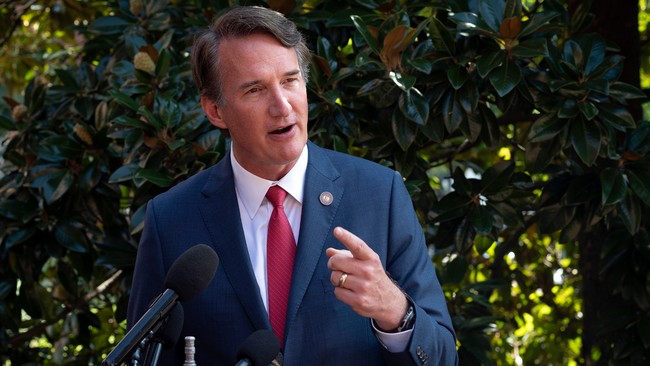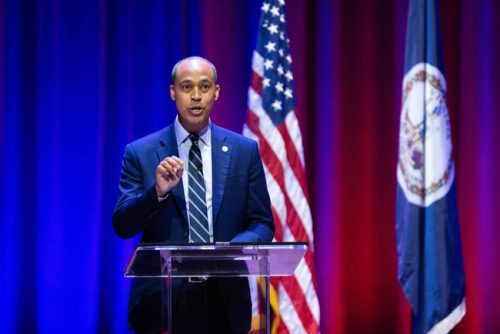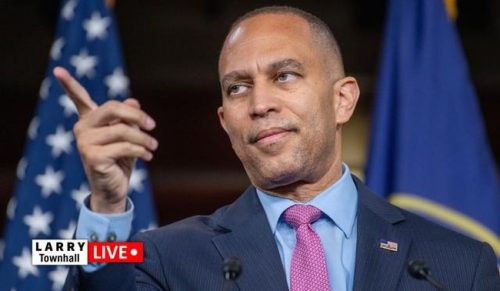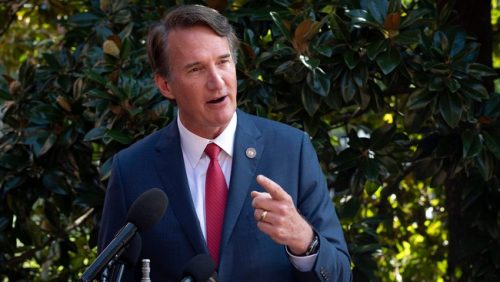Virginia Democrats are rushing a mid-decade redistricting push that would lock in a long-term advantage and shrink Republican representation despite robust GOP voter totals. Critics say the move ignores a 2020 voter-approved bipartisan redistricting process and could flip two or three congressional seats. Legal and political fights are already forming, with governors and former attorneys general calling the plan unconstitutional and warning of severe consequences for representation in the commonwealth.
What’s unfolding in Richmond is not a routine map tweak. Democratic lawmakers are pursuing an amendment route that would let them redraw maps mid-cycle and likely produce a supermajority in the General Assembly. If successful, the change would hand Democrats an outsized structural edge in both congress and state control, turning Virginia into a reliably one-party state for years to come.
News from @reidepstein: Democrats are moving to redistrict Virginia https://t.co/d0SlXJ97Mf
— Shane Goldmacher (@ShaneGoldmacher) October 23, 2025
The next front in the nation’s pitched battle over mid-decade congressional redistricting is opening in Virginia, where Democrats are planning the first step toward redrawing congressional maps, a move that could give their party two or three more seats.
The surprise development, which was announced by legislators on Thursday, would make Virginia the second state, after California, in which Democrats try to counter a wave of Republican moves demanded by President Trump to redistrict states to their advantage before the 2026 midterm elections. No other Democratic state has begun redistricting proceedings, while several Republican states have drawn new maps or are deliberating doing so.
Democrats now hold six of Virginia’s 11 congressional seats. Redistricting could deliver two or three additional seats for the party, depending on how aggressive cartographers choose to be in a redrawing effort.
The numbers are stark and easy to read. President Trump got 46.6 percent of the vote last November, yet under the proposed plan Republicans could be left with only 18 percent of the state House seats. When nearly 40 percent of voters identify with the GOP, shrinking representation to single digits in key chambers is neither fair nor stable for self-government.
Voters approved a constitutional amendment in 2020 to move Virginia toward a nonpartisan redistricting commission, a direct check on exactly this sort of political opportunism. That bipartisan promise matters because it was a voter-driven correction to political map-making, not a legislative power play. Overturning or sidestepping that result would be a slap at the ballot box.
Governor Glenn Youngkin called the proposal “nuts.” He has publicly labeled the scheme unconstitutional and warned that it’s an effort to sidestep voters. The governor argues the Democrats are attempting “to run some desperate ploy to redistrict Virginia.”
“I think it is unconstitutional,” Youngkin said. He added the Democrats are “trying to run some desperate ploy to redistrict Virginia.”
“Five years ago, the commonwealth held a constitutional amendment referendum…it passed overwhelmingly, supported to have a bipartisan redistricting commission to take care of this thing. And now here they are trying to override the vote of Virginians and take votes away from Virginians in order to drive this crazy political aspiration to make Virginia look like California,” Youngkin said.
Even some legal observers concede the maneuver is bold in its audacity. Democrats are reportedly preparing a timetable that would pass an amendment, pass it again after the required intervening election, and then ask voters to ratify it in a one-off referendum timed to maximize Democratic turnout. That kind of calculus is political gaming aimed at entrenching power.
The campaign against Republican influence is pitched as reform, yet the mechanics read like a partisan takeover. Republicans warn the result would be maps drawn to favor incumbents and the majority party, reducing competitive districts and silencing substantial swaths of the electorate. Once controls like that are in place, reversing them becomes much harder.
2) Can the Supreme Court stop this?
No, this is perfectly legal, even if it’s extremely cynical, ruthless, and a blatant power grab that breaks over 100 years of history and tradition in Virginia. There is no legal argument that exists to stop this in the courts.
3) How can this happen so quickly?
The Constitution of Virginia says that amendments must be passed by the General Assembly twice with one election held in between. Provided the Democrats in Richmond pass this amendment before November 4, they can come back and pass the same exact amendment in January and send it to the voters for ratification.
4) Can this be done before the midterms?
Yes, but it requires precise timing. The Constitution says the amendment must be put up for a vote no sooner than 90 days after it is finally passed by the General Assembly. As long as Democrats still win the House of Delegates in November, they pass the amendment in January and hold a referendum in May. Democrats can also change the primary date to August if they want to give themselves more time to actually gerrymander Virginia’s congressional maps.
5) Could this referendum actually pass?
Democrats will frame it as “saving our Democracy” and use Virginia’s mild Blue lean plus their edge in low turnout off-year and special elections to win. If this referendum were held on the same day as a midterm or presidential election I think they’d lose, but a special May referendum? That’s totally unprecedented in Virginia’s history. They would be more likely than not to prevail.
6) What districts would Democrats pick up from redistricting?
Theoretically? Every seat but the 9th. In reality, it will likely be the 1st, 5th, and 2nd. It is relatively easy to draw an 9-2 map for Democrats in Virginia, complete with a supermajority in both chambers of the General Assembly. If that were to actually happen, then it’s over. Virginia would become a second Maryland.
Here’s just an example of what a gerrymandered map would look like.
The top line is that we are in totally uncharted waters, but it’s just another sign of the times. This is what wielding power without apology actually looks like. All of this is legal. And none of it is even considered by the Right because our side is comprised of losers who view playing to win as a violation of their own principles.
There is one procedural wrinkle that could matter in court: early voting in the general election began in September, and opponents argue that procedural timelines were already set in motion. That timing may create a legal opening to challenge whether the amendment process satisfied the constitution’s intervening election requirement. Courts will have to weigh those calendar questions carefully.
Early voting began in September. Hundreds of thousands of ballots have already been cast. With an election currently underway, one could argue that Democrats have missed the deadline to pass a constitutional amendment prior to “the next general election” as the general election began on September 19.
We need @JasonMiyaresVA to win this race for Attorney General so he can immediately sue the Democrats in the General Assembly on the grounds that this power grab is unconstitutional.
Incumbent Lt. Governor Winsome Earle-Sears warned voters to block her opponent, writing “This election is a referendum on who we are as Virginians.” Her concern reflects how the special session plan could drag candidates off the campaign trail and force trade-offs in a tight season.
Ken Cuccinelli, former Virginia Attorney General, issued a statement to Townhall and said, “The requirement for an intervening election is rather obviously in place for accountability to the voters. Virginia’s election began a month ago, so the next intervening election that could fulfill the requirement necessary for amending the Virginia constitution is the 2027 election.”






